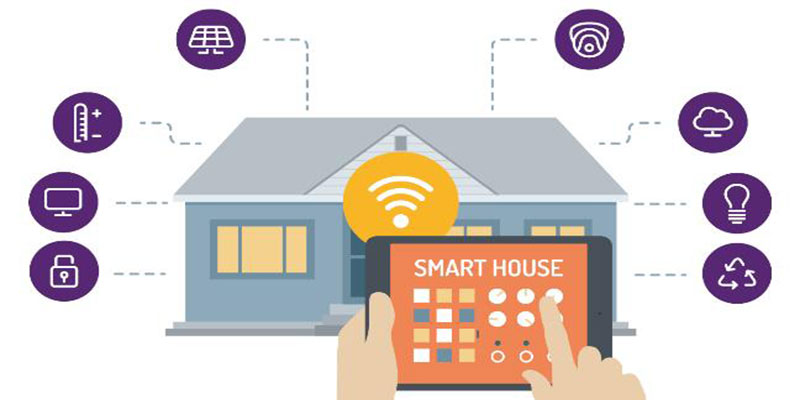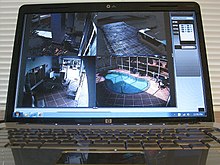
There are many aspects to consider when selecting a home alarm system. The most crucial components of any security system are motion detectors and sensors. A monitoring subscription is also an important element. These features should always be included in any security system. A system that includes all these components will give you the security you require.
Sensors
The global sensor market is expected to recover after the recent effects of COVID-19, which disrupted various manufacturing sectors and delayed the launch of new products. The increasing demand for sensors has increased the adoption of MEMs-based sensors, which are smaller and more energy efficient. These sensors are also ideal for the consumer electronics market. IoT's growth will lead to an expansion in the number of sensors applications.
The global sensor market can also be segmented according to the application. It can further be broken down into automotive, IT, telecommunication, industrial and electronics as well as aerospace & defense. Because of its safety standards, healthcare holds the largest market share. It is expected that it will grow faster than other segments.

Motion detectors
Motion detectors form a key component of many home security systems. These devices detect motion and can indicate it by a small LED light. These devices can be connected with a smart home security system to send remote alarms. Some systems allow you to schedule motion alarms through a mobile app.
The best motion detectors will perform at their best. Place them in areas that produce the least false alarms. Many motion detectors come with detailed instructions to help you place them. Ideally, motion detectors should be placed in areas that do not have large amounts of foot traffic. In other words, burglars will most likely attempt to gain entry through the back door if they break into a home.
Cameras
There are many kinds of home security camera on the market. Some are more popular than others but each one has its own unique features and use patterns. Nanny cams are a popular choice. They have a fixed lens, support for memory cards, and even an alarm trigger. For parents with small children, the camera can record sounds.
Security cameras have the ability to notify homeowners of suspicious activity, which is one of their greatest advantages. A security camera can help prevent break-ins because it can stream video to a smartphone app, alerting homeowners to the intrusion. The camera can also monitor activity outside, making it more secure. A porch camera, for example, can make the neighborhood safer.

Monitor subscription
Home security systems may offer monthly monitoring subscriptions for an additional fee. Although these subscriptions don't have to be purchased, they might be worth considering if false alarms are a concern. These services can alert emergency services to send police to your house in an emergency. You can reduce false alarms by purchasing a monitoring subscription.
You can choose between a monitoring subscription for a monthly or annual fee. Monitoring subscriptions tend to be more expensive than standalone devices. Many systems let you remotely monitor your home, which is great for when you're away.
FAQ
Which Home Security Systems can't be hacked
This question is dependent on the definition of hacking. Hacking is the unauthorized access to computer systems, networks, and data. Hacking is impossible for most home security systems because they do NOT contain software that can be remotely controlled. They don't permit anyone to enter your home without your permission.
If they are connected to an internet connection, however, certain home security systems may be compromised. These systems often require a password to be activated. This means that anyone can hack them if they know the right password.
Which home security system is easiest to install?
These systems are considered the most effective for home security and do not require any type of installation. They are called "plug & play" systems, and they work like magic. It is as simple as plugging them into the power socket and connecting them to the Internet using a wireless network router. Once connected, you'll be able to control everything from anywhere in the world.
Can I install my own security camera?
Yes! If you have the necessary knowledge and skills, you can install a house alarm. You can hire an expert to install your alarm properly if you don't feel confident.
Statistics
- Related questionsHome security systems that are 100% DIY (safewise.com)
- Depending on your insurance, 24/7 professional monitoring may qualify you for as much as 15% off your premium. (safewise.com)
- That's probably why Cove has a whopping 98%* customer retention rate. (safewise.com)
- Unlike other online safety services that charge up to 100 percent of your monthly fee, Cove charges no upfront fees and has no hidden costs.
External Links
How To
How to Install Outdoor Motion Lights
How to install outdoor lights
The first step in the installation of outdoor motion light fixtures is choosing the right light fixture type. Next is to decide where you want the lighting fixtures to be located. Next, you will need to wire your system. Mounting the lighting fixtures is the final step.
Outdoor motion lights can be used to light pathways, driveways and walkways. There are many styles, shapes, sizes and colors available. Floodlights include spotlights. Pendants, downlights. Track lights. Wall sconces. Chandeliers.
There are three main types of motion lights: hardwired, wired and battery-powered. Hardwired systems use wires that connect directly from the power source to the fixtures. Wireless systems transmit signals using radio waves. The fixtures are powered by batteries.
Hardwired systems are usually installed by electricians. If you plan to hire an electrician to do this work, make sure he or she knows how to wire outdoor motion lights. Otherwise, you should consider hiring someone who specializes in installing these kinds of systems.
Hardwired systems can be more difficult to set-up than wireless ones. There is no need to run wires through walls and ceilings. If you do decide to buy a wireless system, however, you need to first determine which wireless technology is best for you. There are two main types, radio frequency (RF), and infrared. IR systems require line-of-sight between the transmitter and receiver. Because they bounce off objects like walls and furniture, RF systems permit some obstruction.
Before you can buy a wireless system, make sure you know which controller you will use. Most outdoor lights have built-in controls. However, you have the option to either wire them or use a handheld remote to control them. The wired remotes attach to the fixtures using cables. The handheld remotes are similar to flashlights, and can be operated by pressing buttons on the bodies.
Easy installation of battery-powered systems is possible. It is easy to connect them to an electric outlet. The majority of models have motion sensors to prevent lights from switching on when there is no movement. The lights will turn on automatically if there's any movement near the sensor.
Outdoor motion lights often have timers. These enable you to conserve energy by switching on the lights at night and turning them off during the day. Timers can vary from 10 minutes to 24hrs.
When it comes to choosing the right outdoor motion light, you may be tempted to spend more money on high-quality products. It's not worth the extra cost if you don't really require a particular feature. An LED spotlight is enough. It is very inexpensive and provides plenty of illumination.
The Best Home Security System. Over the past few years, home security has seen tremendous growth. This growth has been fueled by technological advancements and increased public awareness regarding crime prevention. As a result, homeowners today have a wide variety of options when selecting a home security system.